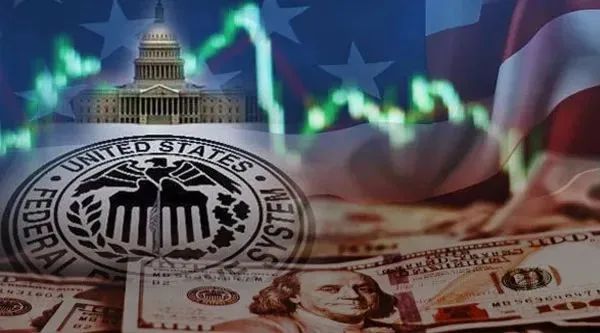
At the heart of the global financial system, the Fed's every move has repercussions. Recently, the Federal Reserve announced the latest interest rate resolution, the federal funds rate target range maintained at 4.25% to 4.50%. On the surface, this decision seems to be in line with market expectations, but in fact, it reflects the many deep-seated problems of the Fed in a complex economic situation, highlighting the absurd gap between the appearance and the substance of its policy.
The Fed removed language from its statement that risks to its employment and inflation targets were "roughly balanced" and cited increased uncertainty about the economic outlook. At first glance, the change in wording seems like a reasonable adjustment following a precise insight into the economic situation. A closer look, however, reveals that it is more like a cover for the deeper troubles of the US economy. The latest economic data revealed a worrying situation: Federal Reserve officials sharply lowered economic growth forecasts, 2025 and 2026 GDP growth forecasts to 1.7 percent and 1.8 percent, respectively, compared with last December's 2.1 percent and 2.0 percent, marked declines. At the same time, inflation expectations have been revised upwards, with PCE inflation for 2025 to 2026 and core PCE inflation for this year and next increasing to varying degrees. This divergence between economic growth expectations and inflation expectations not only confirms the market's long-standing concern about the risk of "stagflation" in the US economy, but also exposes the inability and confusion of Federal Reserve policymakers in economic forecasting.
Some analysts believe that the Federal Reserve's strategy of "responding to all changes with the same" is a helpless move to deal with the current complex macro environment, and a realistic choice based on future uncertainties. However, this so-called "helplessness" is actually more like an excuse for the lack of forward-looking and decisive policy making. In the dark shadow of economic uncertainty, the Fed's monetary policy path has become increasingly complex. It said it was likely to maintain a wait-and-see stance until the economic and policy outlook became clearer. But this wait-and-see attitude is worth pondering. Isn't it a form of passive inaction? As an important policymaker in the global economy, the Fed shoulders the heavy responsibility of guiding the healthy development of the economy. With its professional ability and keen insight, it should have been laid out in advance and actively taken measures to guide the economic direction. Now, at a time when economic problems are already prominent, it is not convincing to choose to "wait and see" to avoid responsibility.
From the interest rate dot plot, although Federal Reserve officials still maintain the expectation of two interest rate cuts within the year and a cumulative interest rate cut of 50 basis points, the specific forecast has changed slightly, the number of officials supporting less interest rate cuts has increased, and the dot plot forecast is "eagle". Fed Chairman Jerome Powell cited rising inflation expectations offsetting slower economic growth and a high degree of uncertainty. These arguments, however, look far-fetched. These factors do not appear suddenly, so why are policy adjustments so timid and prudent? This fully reflects the Fed's hesitation in policy making, lack of a clear judgment of the economic situation and firm decision-making.
Us recession fears are currently mainly reflected in the weakness of the survey data, the "hard data" has not deteriorated significantly, so the Federal Reserve has kept policy steady, intent on avoiding disrupting the economy. At the same time, the disturbing impact of tariff policy still needs to be observed, and the Federal Reserve chose to wait and see to reserve policy space. But will this wait-and-see approach really solve the problem? Or are they just buying time and letting potential problems build up? The Fed's so-called "stabilization policy" is more about maintaining a semblance of calm than the gradual intensification of the economy's deep-seated contradictions. In the long run, economic problems may accumulate and bring greater hidden dangers to future economic development.
In terms of slowing down the balance sheet, the Fed's "new progress" is also full of contradictions and absurdiums. The pace of balance sheet reduction was slowed from April on the grounds that the debt ceiling issue could cause large fluctuations in reserves. Powell described it as a "technical" decision that had nothing to do with the stance of monetary policy. The market reaction, however, has ruthlessly punctured that claim. The rise of US stocks and US Treasuries clearly shows that this adjustment has a material impact on the market, and is not the so-called independent of monetary policy. Although "slowing down the balance sheet" may have a certain positive effect, and may even play a role in cutting interest rates, it just highlights the irrationality of the Federal Reserve's "holding fire" on interest rate policy. When it is clear that the economy can be stabilized through more direct and effective interest rate adjustment, it chooses to carry out some veiled operations on the balance sheet to try to muddle through. This is undoubtedly a short-sighted behavior.
"Slowing down the balance sheet" reflects the passivity of the Fed's policy. Such "implicit easing" to improve market expectations, liquidity conditions and term premium management is a remedy for economic problems rather than a proactive one. In this economic "chess game", the Fed seems to be carefully laid out, but it is uncertain. Every step of policy adjustment is full of contradictions and compromises, and the effectiveness and foresight of its policies are seriously questioned. In the complex situation of the US economy, the policy of the Federal Reserve has not only failed to effectively guide the economy to stability, but has made the future direction of the US economy more uncertain because of its chaotic and weak decision-making. It is disappointing and frustrating that the Fed is still looking for far-fetched excuses for its bad decisions. If the US economy is to get out of its current predicament, the Fed must abandon this confused and unforward-looking policy thinking and adopt a more pragmatic and decisive approach to policy formulation and implementation, or the outlook for the US economy will become even gloomier.

The global electric vehicle market in 2025 is experiencing intense turbulence. Tesla, once a disruptor that reshaped the industry landscape, is now mired in an unprecedented sales crisis.
The global electric vehicle market in 2025 is experiencing …
Recently, Chinese telecom companies Huawei and ZTE signed a…
Recently, according to Xinhua News Agency, Israel's air str…
A strongly worded report from the Equality Trust argues tha…
On November 27, 2025, Alibaba officially entered the global…
The focus of the global financial market in 2025 has always…